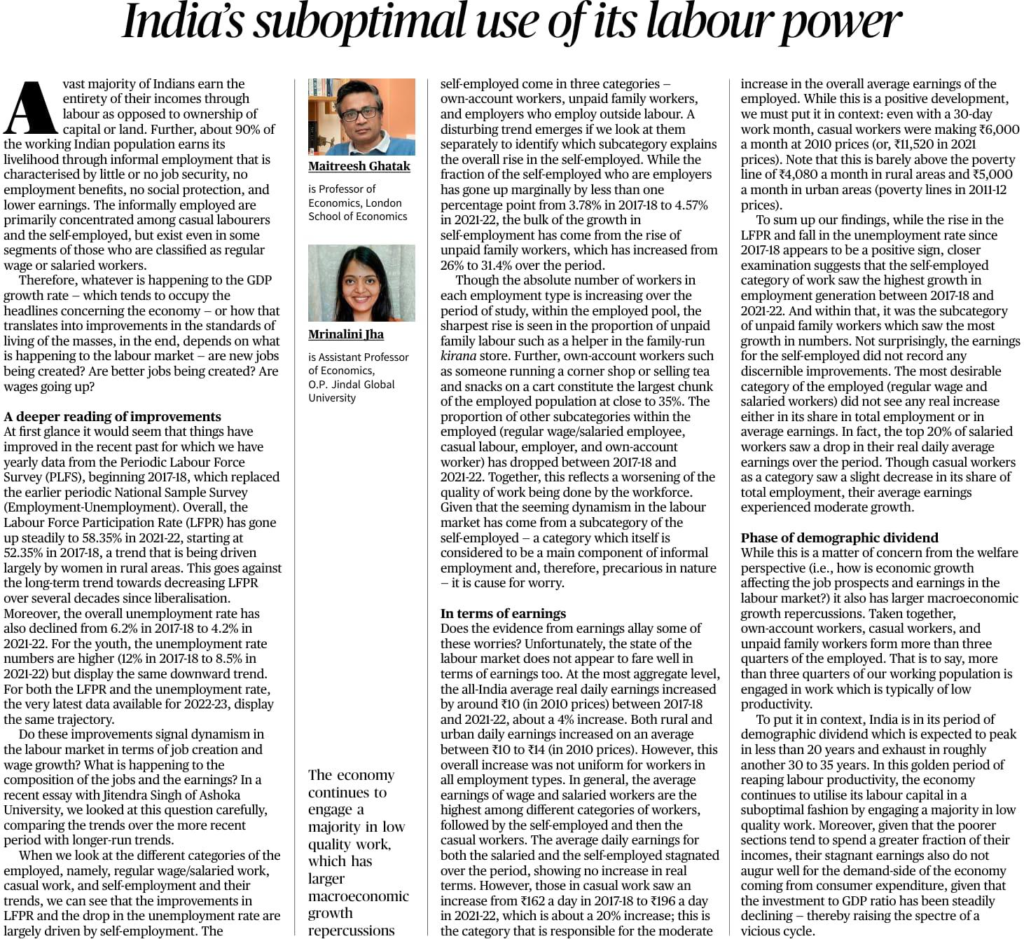i.
Two tweets which caught my attention today.
First, from Mrinalini Jha, which claims that 75%+ of India’s working population continues to be engaged in low quality, low earning, low productivity, predominately informal, casual, irregularly paid forms of work. This is the summary from a longer op-ed, here:

Second is this tweetstorm on India’s opportunity to capitalise on its demographic dividend and geopolitical/tradewind shifts, leading to a chance to really flesh out its labour-intensive manufacturing base:
ii.
The question that both of these threads raise in my mind is: What does it take to be a great labor intensive entrepreneur and investor? I’m talking about the founders of companies that have the potential to employ 100k+ people, i.e:
- Walmart -> 2.3m+ people.
- Amazon -> 1.16m+ employees.
- G4S -> 500k+ employees.
- Foxconn -> 767k+ employees.
- Adani Group -> 45k+ employees
I will note that direct employment is not the only way to look at this. There’s also networked supply chains, i.e Alibaba/Shopify unlocks markets for millions of businesses, Uber has millions in its indirect labour force, and the sub-contracting value chains of automotive companies are spread across 100s of companies which result in increasingly competitive, efficient, productive ecosystems that get millions of people into formal work.
When thinking about these types of enterprises, I’m reminded of Alfred Chandler’s Book, ‘The Visible Hand: The Managerial Revolution in American Business’. Here are his main propositions, according to wikipedia:
- that the US modern multi-unit business replaced small traditional enterprises, when administrative coordination permitted better profits than market coordination;
- that a managerial hierarchy has been created for this multi-unit business enterprise;
- that the multi-unit business enterprise appeared for the first time in history at a time when the volume of economic activities reached a level that made administrative coordination more efficient than market coordination;
- that once a managerial hierarchy has been created and successfully carried out its functions of administrative coordination, the hierarchy itself became a source of power, permanence and continued growth;
- that the careers of salaried managers became increasingly professional and technical;
- that the multi-unit business enterprise grew in size and diversity, and as its managers became more professional, the management of the enterprise became separated from its ownership;
- that managers preferred policies that favored long term stability and growth of their enterprises to those that maximized current profits;
- that as large enterprises grew and dominated major sectors of the economy, they altered the basic structure of these sectors and of the economy as a whole.
In other words, large scale, organised labour, economies of scale, is good for all. Hence the emergence of the ‘organisation man’ archetype and such:

iii.
I think the second set of interesting questions here are:
- What drives the succesful organisation of industries that scale labour productivity?
- What factors get in the way of scaled labour organisations?
- What do practical plans to maximise (1) and minimise (2) look like?
I’m reminded of a point made to me by a friend doing business in Bishkek, Kyrgystan. He said that in many regions which are hostile to business, growing your business past a certain size is basically illegal. Taxes skyrocket, government officials come for bribes, folks see the entity as worth attacking, etc. It takes a lot of political levity to get past this (Dangote, Adani, Asian Godfathers) are good examples of this.
One of the ways around this is creating a special space for these larger businesses to be brought from overseas. For example, Lee Kuan Yew’s economic development board specifically focused on reducing (2) and maximising (1) on behalf of very specific companies and industries they were trying to cultivate in Singapore. (More on this here).
I believe the answers to these questions are not only informative for government officials, but also for individuals looking to build their own ancillary social infrastructure to grow businesses in frontier and developing markets. Businessmen/elites organizing to create a better playground is beneficial for all. Other times, one player may seek to tilt the field in their favour, and use these patterns as well (i.e subsidies for getting past a certain point of scale), and that can actually be good as well, IMO. (Read: Dangote Tax Credit).
iv.
Final thoughts on this:
- Where is the risk capital for these types of ventures?
- What are the patterns of expertise for these types of ventures?
- How does AI/Automation make these types of low hanging labour force fruit harder to harness?
- What does it take to build the infrastructure for these ‘real, scaled businesses’? i.e energy/education infra. What are the innovations that can reduce the costs or increase the provisioning of this by 10x+?
I’ll edit this braindump another time, but if any of this made sense to you, feel free to let me know what your thoughts are.
Krish
Leave a Reply